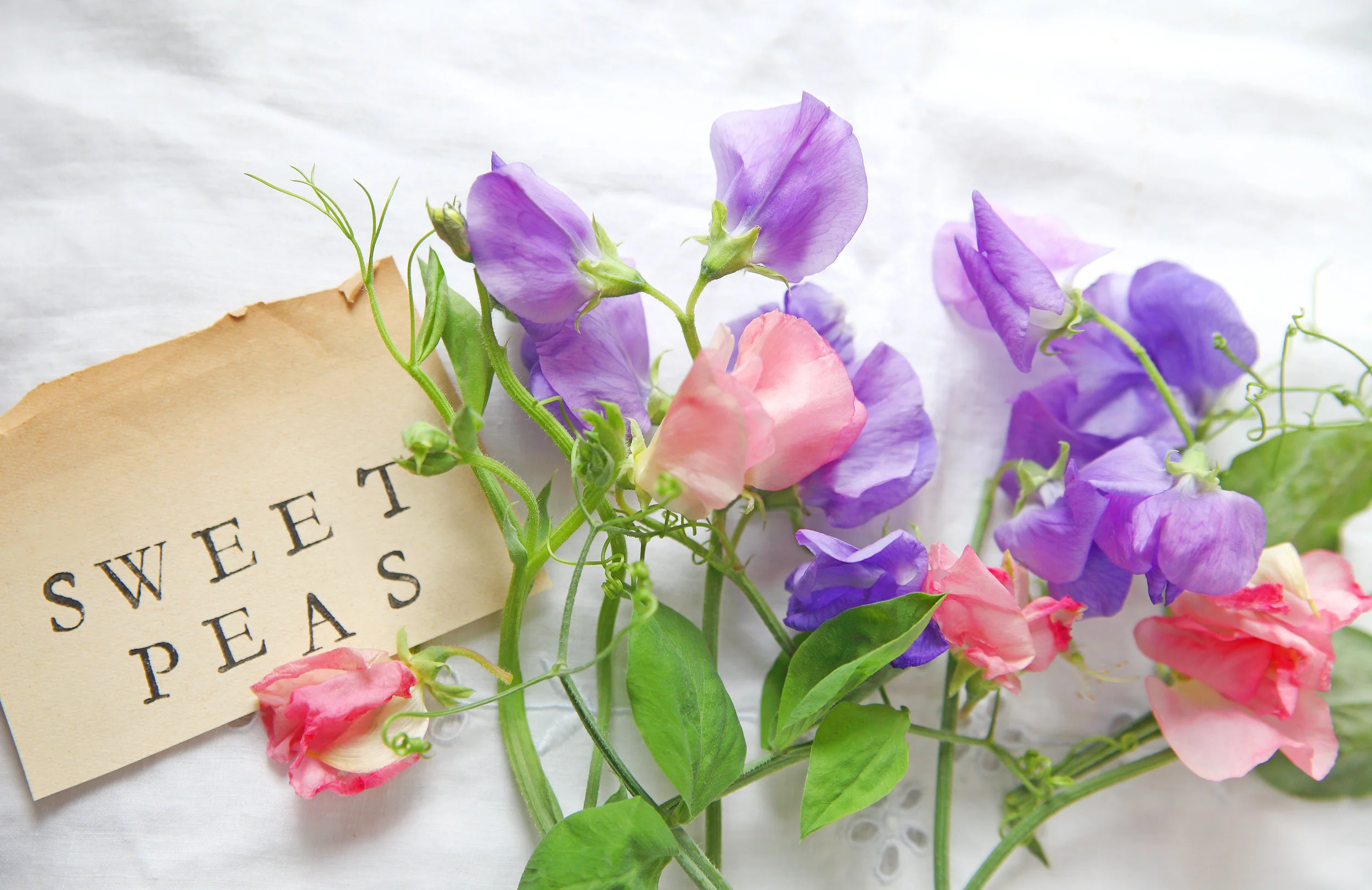Learning How To Grow Sweet Peas in New England
I’m determined to learn how to grow fragrant sweet peas this year, and this is how I’m going to do it!
My love affair with sweet peas started years before I knew their name. I had seen them in floral arrangements, but I never asked what they were called. Fast forward a few years later when I was being interviewed to work at a high-end floral design studio out of Boston. During the meeting, which was at a fellow interior designers office, the owner of the floral company pointed to a beautiful group of mixed flowers that were sitting in a clear vase of water on the fireplace mantel. While pointing at them, he asked if I knew what each was called. I quickly named the all of the flowers in the vase except for the dainty white flowers I had seen before, and loved. A little embarrassed that I didn’t know, all I could say was I never knew their name, but loved the fragrance and their appearance. The look of surprise on his face will forever be embedded in my mind as he quickly said “they are sweet peas”. Did I get the job? Yes, but from that day forward, I have never forgotten the name of these fragrant flowers.
It’s now the tail end of February and after being inspired by a photo I shared on Instagram, I have decided to order high-fragrance sweet pea seeds from Burpee. I have included the link in this post.
I have tried several times in the past to grow sweet peas, but have been unsuccessful due to my own lack of preparation or proper care. This year, I am determined to grow sweet peas successfully in my new flower cutting garden. With my research, I found that fragrant sweet peas are usually the annual versions whereas perennials offer more of a show than fragrance. I want both, so annual sweet pea seeds it is!
By clicking on the photo above, or this link for sweet pea seeds, will take you to the same product I am ordering.
From The Burpee Site : Relatively easy to grow, the main thing to remember is that sweet peas like cool weather, requiring about 50 days of temperatures under 60 degrees to bloom well. In cooler climates, sow seeds outdoors in early spring as soon as the soil is workable. Seedlings can withstand a touch of frost, so don’t stress if the weather turns colder. Flowering will last from spring into summer, and even into fall in some regions. A thick layer of mulch will keep roots cool and extend the blooming as long as possible.
In the South, sweet peas (look for short-day varieties) can be sown outdoors in the fall, October to early November or even in late winter, January-February. They’ll produce roots but not much top growth until spring.
To speed germination, before sowing make a small nick in the seed coat with a knife, metal file, or sandpaper. This will allow the seed to take up water more easily. Plant seeds one to two inches deep.
You can also start seedlings indoors in a cool place, six to eight weeks before last frost date. But don’t let them entwine together into a tangled mess that’s hard to separate before it’s time to transplant into the garden. Before transplanting, pinch off any flower buds to encourage roots.
The best location offers full sun (except in really hot regions where late afternoon shade will be appreciated), rich soil, and good air circulation. Protect young plants from birds (with netting) and slugs.
Sweet peas will scramble up all manner of fences, trellises, and arbors, attaching themselves by slender tendrils. Supports should be small enough in diameter for the tendrils to easily wrap around. If you want to grow sweet peas up a thick support, you’ll need to attach netting or lengths of twine.
Sweet peas can also be used like clematis to trail through flowering shrubs, to offer wonderful floral combos or to bloom when the shrub is not. Since sweet peas are annuals, they won’t accumulate a mass of vines from year to year to overwhelm their shrub “host.” They can also be grown alongside perennial or woody vines to extend the season of interest.
Though not edible like their garden-pea cousins, when trained up bean teepees in the vegetable garden sweet peas add an element of beauty and also attract beneficial pollinators like bees, which will then visit your fruit and veggie plants.
Another benefit of growing sweet peas is they make excellent, long-lasting cut flowers. A clutch of them in a small vase brings their heavenly scent and the romance of the cottage garden indoors. And by regularly cutting flowers from the plant, you’ll be encouraging more blooms.

